We all know what skiing is, right? You strap some boards on your feet and glide across the snow. But what is it called when you choose to ski uphill rather than take a lift? And what are those people doing who cruise by, kicking their skis out to the side like they’re ice skating? Whether you’re new to the sport or not, keeping track of the many different types of skiing can be challenging.
Here’s a look at the more common types of skiing and how the gear differs for each one:
Downhill Skiing
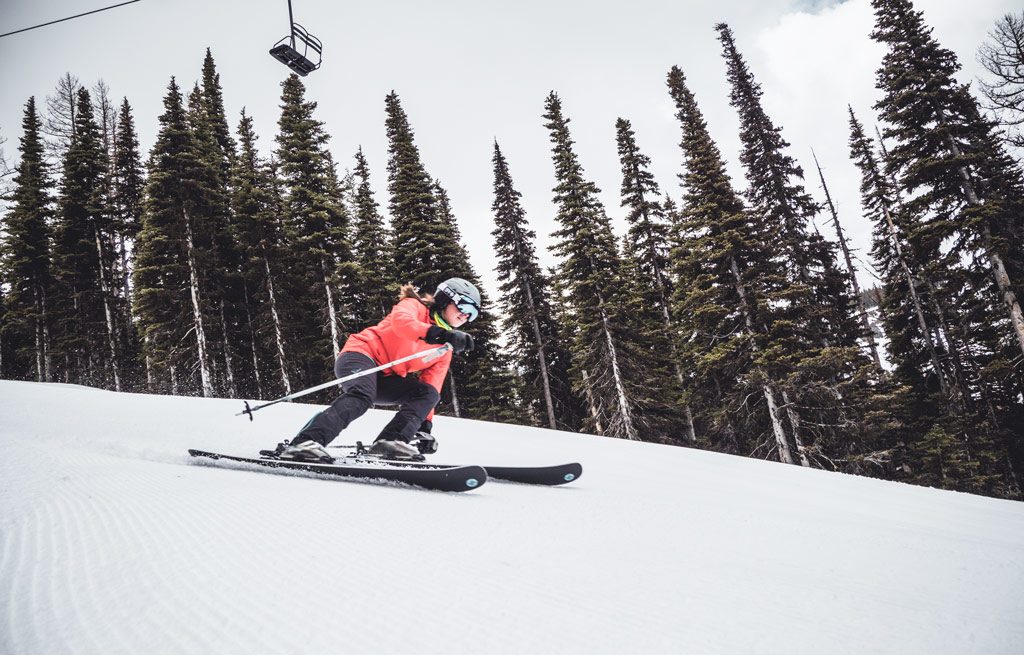
Sometimes called alpine skiing, downhill skiing is what most people know. It’s done at lift-assisted ski resorts with groomed runs that are marked and patrolled. Downhill skiers wear stiff plastic boots that click into fixed-heel bindings mounted to shaped skis. To get down, downhill skiers generally keep their skis parallel while making turns.
Essential gear: downhill skis, downhill bindings, downhill boots, downhill poles
Backcountry Skiing
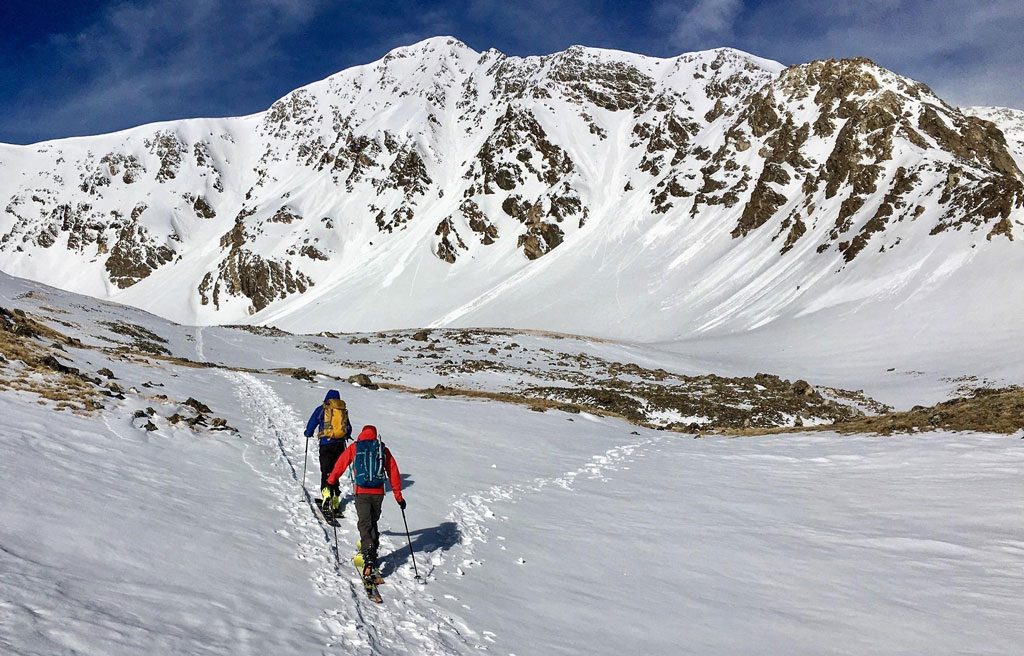
Backcountry skiing (sometimes called off-piste skiing) is any type of skiing done outside the patrolled boundaries of a ski area. It’s often done with alpine touring or telemark gear, where you use climbing skins and bindings with a free-heel feature to ski uphill and then back down. But skiers who use standard downhill equipment and ride a lift uphill can often access backcountry terrain by leaving ski-area boundaries (terrain accessed from a ski resort is sometimes called sidecountry or slackcountry because of the easy access). Before you can go backcountry skiing, you absolutely must be equipped and properly trained for avalanche assessment and rescue. You Learn more about avalanche safety and traveling in the backcountry with our backcountry skiing skills articles.
Essential gear: backcountry skis, backcountry boots, backcountry bindings, backcountry poles, climbing skins, avalanche safety equipment
Alpine Touring
This is a style of backcountry skiing that’s sometimes called AT for short or by the French word, randonnee. With alpine touring, you use special bindings that can switch between free-heel and fixed-heel modes so you can ascend slopes with your heels unlocked (climbing skins provide traction). When you get to the top, you remove your climbing skins, lock your heels back down and descend by making parallel turns as you would when downhill skiing. Before traveling in the backcountry, you must be equipped and properly trained for avalanche assessment and rescue.
Essential gear: backcountry skis, backcountry boots (or alpine touring boots), backcountry bindings (or alpine touring bindings), backcountry poles, climbing skins, avalanche safety equipment
Telemark Skiing
Telemark is a niche type of skiing that’s defined by the way you turn. With special bindings and boots designed specifically for telemark, your heels remain unlocked at all times and you carve turns with a lunging motion that puts your forward leg in a distinctive bent-knee position. Many telemark skiers use backcountry skis. You can use this gear and technique at a downhill ski resort or in the backcountry. If you choose to head into the backcountry, you need some additional equipment, such as climbing skins and avalanche safety equipment, as well as proper avalanche training.
Essential gear: backcountry skis, telemark boots, telemark bindings, backcountry poles
Ski Mountaineering
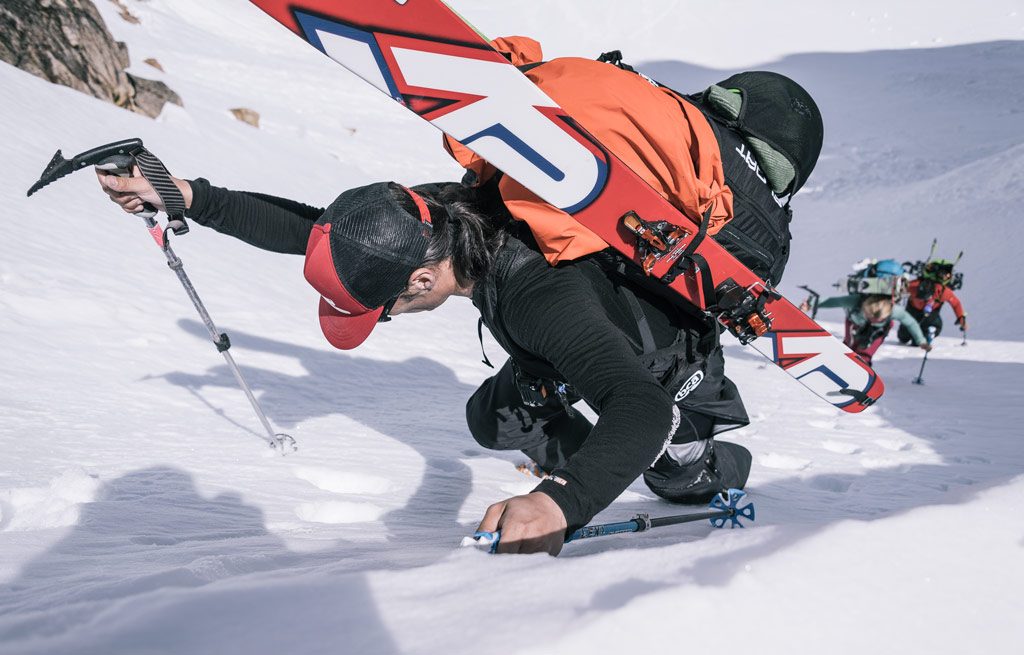
Ski mountaineering is a subclass of backcountry skiing with a focus on reaching the summit of a peak and skiing back down. Ski mountaineers typically use alpine touring equipment to travel across snowy slopes and glaciers. In addition to your standard backcountry gear, you may need things like ski crampons, boot crampons, an ice axe and rope.
Essential gear: backcountry skis, backcountry boots, backcountry bindings, backcountry poles, climbing skins, avalanche safety equipment
Cross-Country Skiing
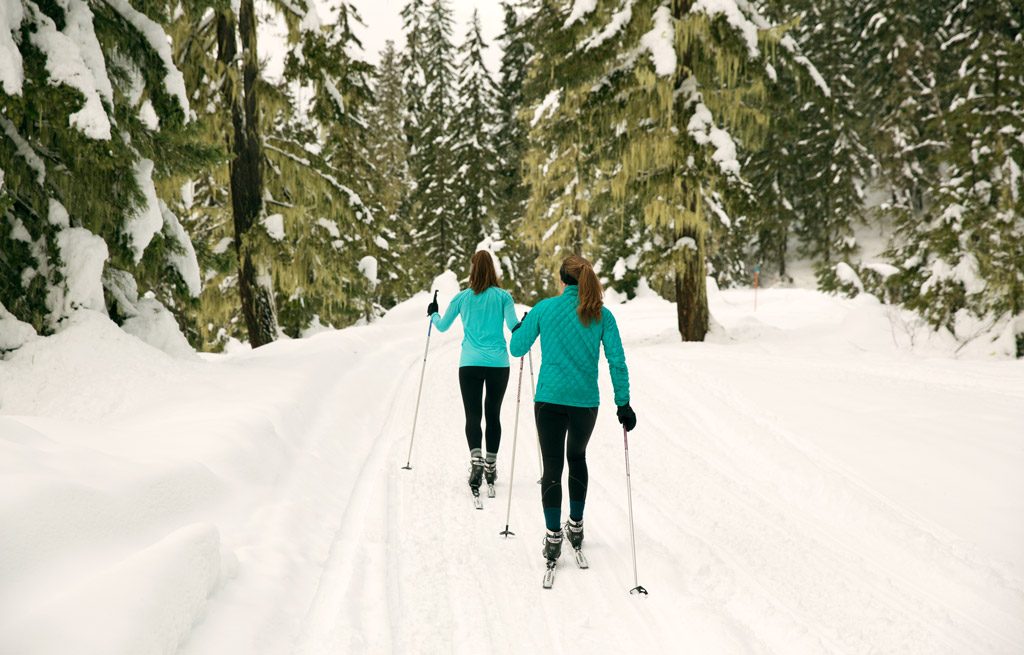
Often abbreviated as XC or called Nordic skiing, cross-country skiing is typically done on rolling landscapes that are gentler than downhill skiing terrain. The skis are long and skinny and the boots are flexible and designed to attach to the skis via bindings that leave your heels free to lift. With this style of skiing, you use human power to climb hills rather than taking a lift. There are two primary styles of cross-country skiing:
- Classic skiing: This is a style of cross-country skiing where your skis remain parallel as you kick and glide forward and back (sometimes called a diagonal stride). You can do this at a groomed cross-country ski area with parallel tracks that your skis go in, or you can head out on ungroomed terrain, such as a forest road or a big open field.
- Skate skiing: Skate skiing is a style of cross-county skiing that uses slightly shorter skis than classic. To propel yourself forward, you kick your skis out to the side, similarly to how you would while ice skating. To move efficiently, you generally need to be on a trail groomed for skate skiing.
Essential gear: cross-country skis, cross-country boots, cross-country bindings, cross-country poles
Freestyle Skiing
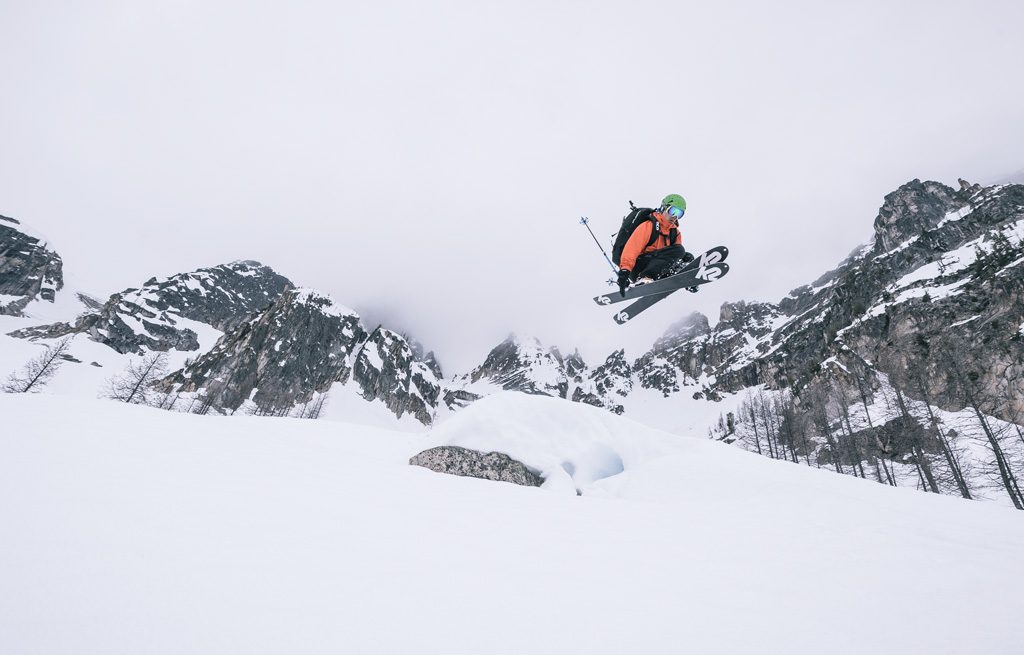
This is an acrobatic form of skiing that can include moguls, jumps and aerial maneuvers such as twists and somersaults. It’s generally done at a downhill ski resort where terrain features are created specifically for freestyle skiing.
Essential gear: downhill skis, downhill bindings, downhill boots, downhill poles
Adaptive Skiing
This type of skiing uses special equipment, such as a mono ski or sit ski, that helps people with disabilities to enjoy skiing. Many ski resorts offer adaptive programs.
Essential gear: adaptive ski equipment
Posted from REI CO-OP



